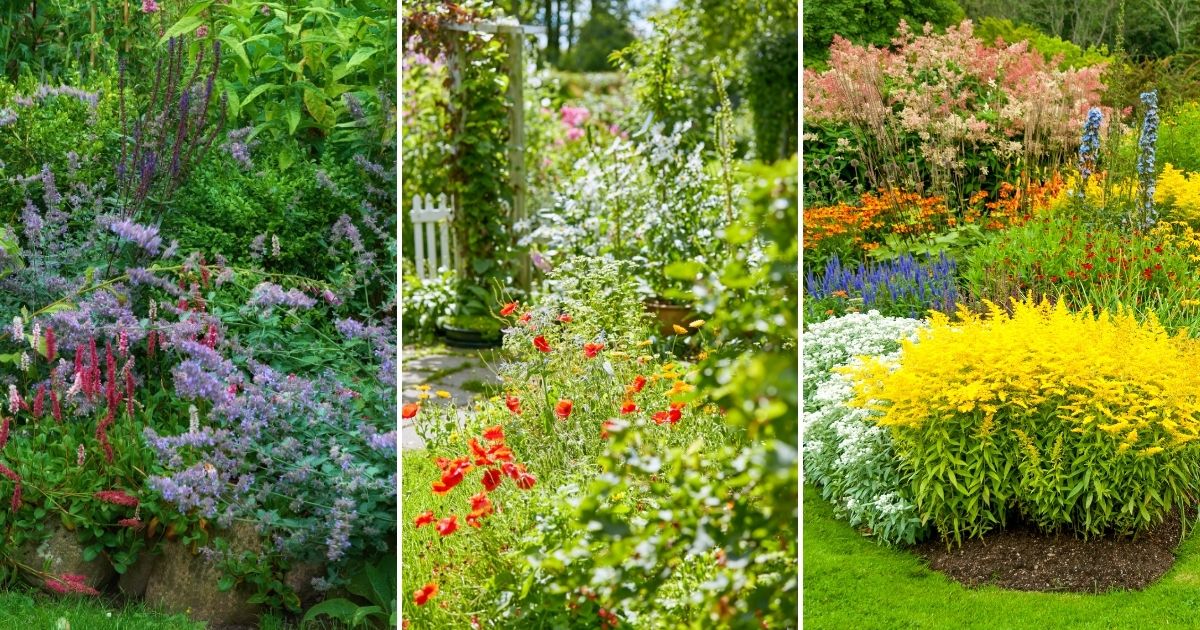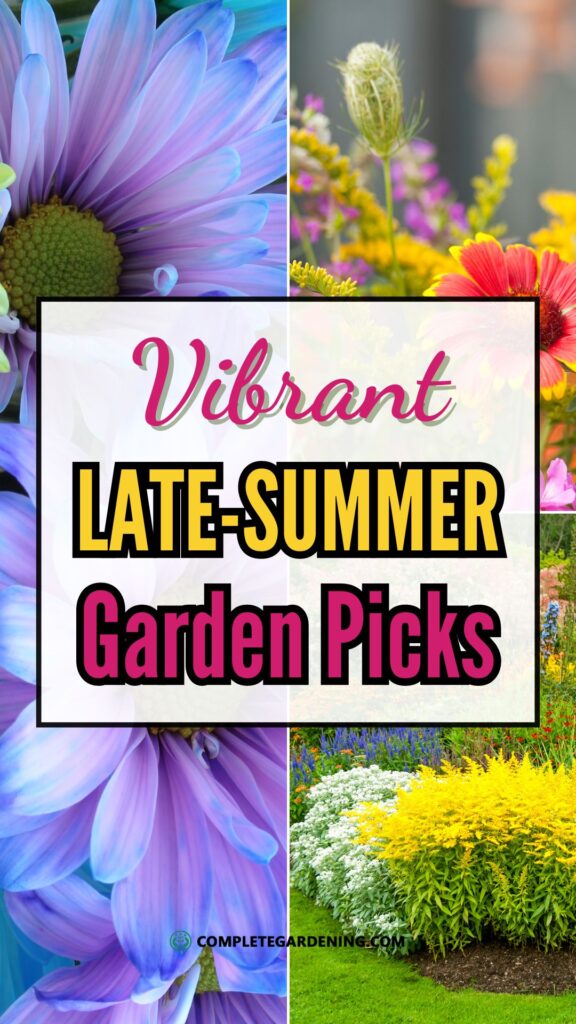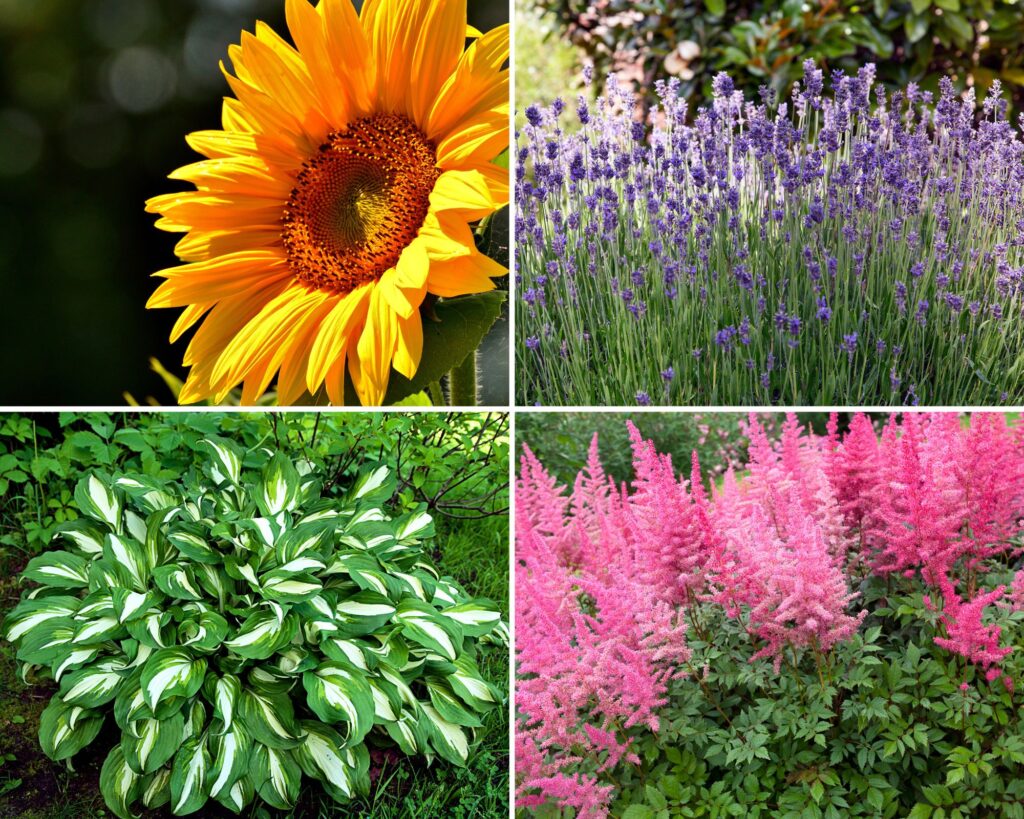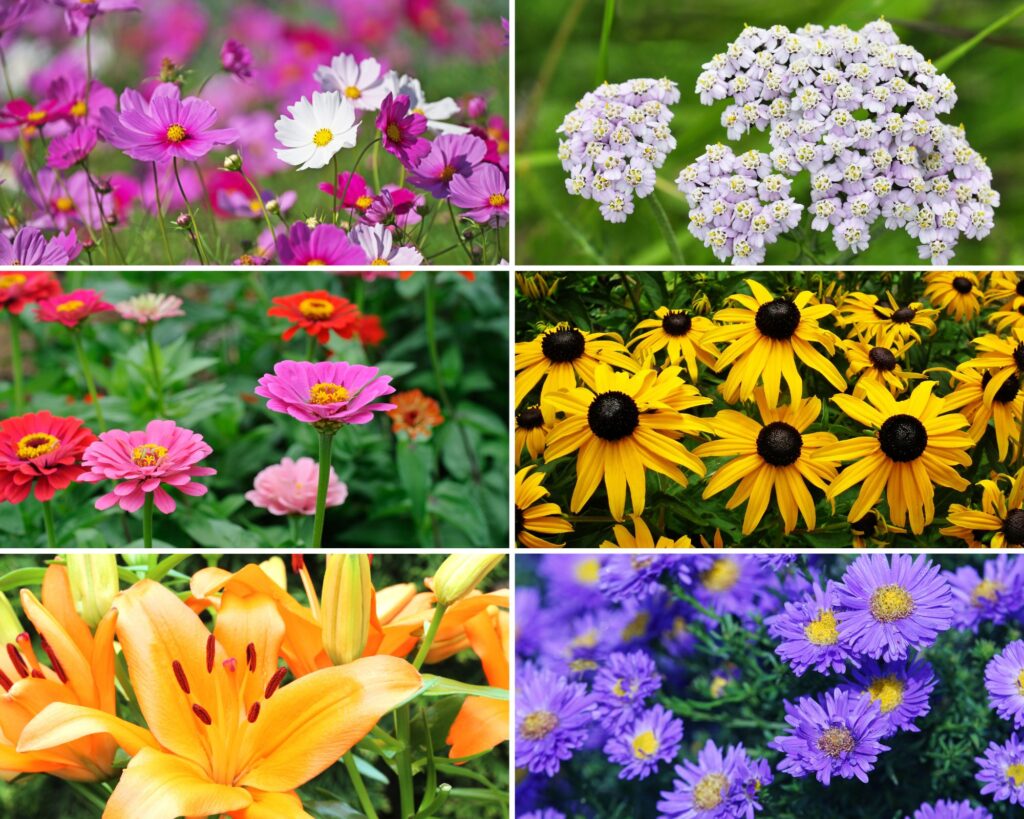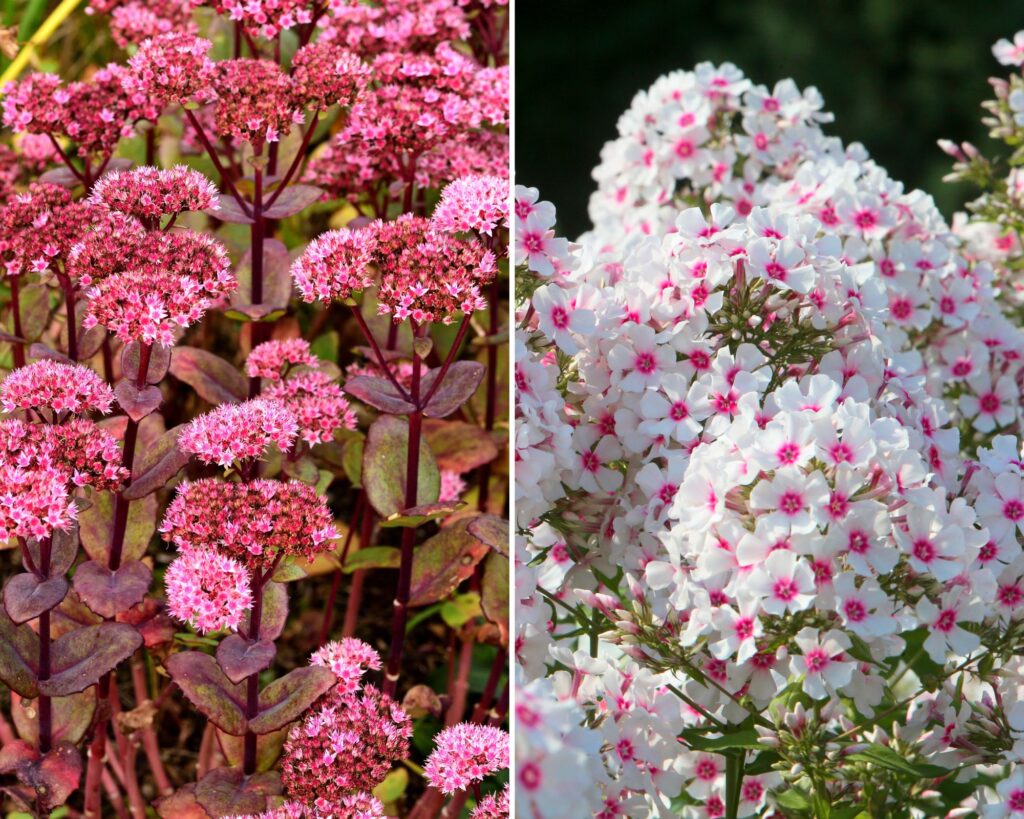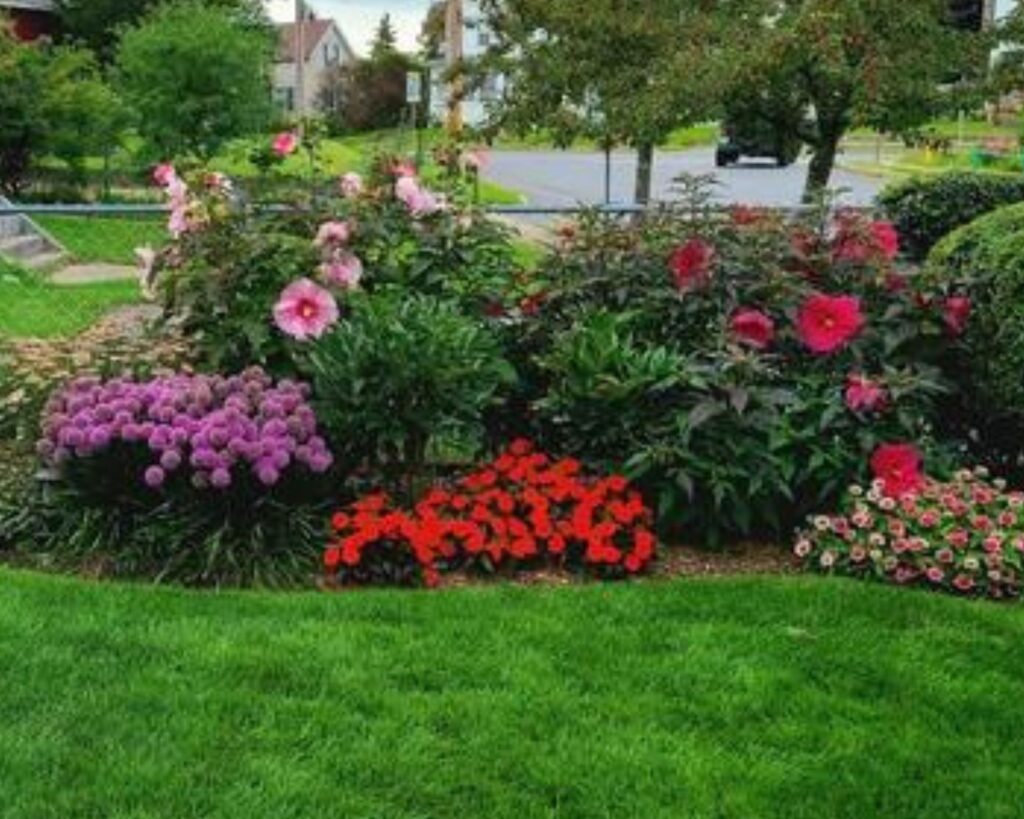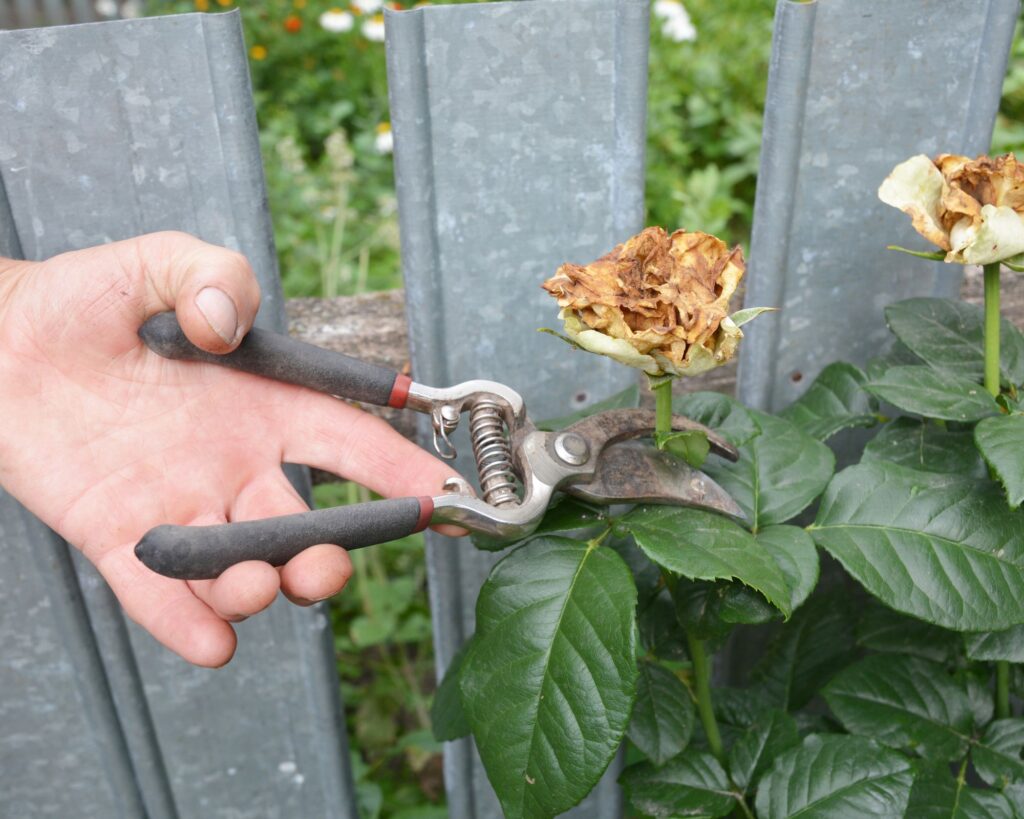Is your garden’s color fading as summer winds down? Don’t let the season steal your garden’s vibrancy! By choosing plants that thrive in late summer, you can keep your outdoor space alive with color and beauty.
Imagine walking through a garden that defies the end of summer—coneflowers, dahlias, and black-eyed Susans in full bloom, creating a magical scene even as other flowers begin to fade. These blooms do more than just look good—they attract bees and butterflies, bringing your garden to life with activity.
Embrace the bold, late-season blooms of asters, sedums, and Japanese anemones, and enjoy a garden that transitions into autumn with grace, keeping its charm intact. Let’s explore how you can create a garden that stays lively and colorful, even as the summer sun sets.
Choosing the Right Plants for Late-Summer Blooms
To achieve a vibrant late-summer garden, consider key factors like sunlight, soil type, and watering needs. It’s important to match plants to your specific garden conditions so they can thrive.
Assessing Sunlight and Shade
Begin by evaluating how much sunlight your garden receives each day. Some plants require full sun (6-8 hours), while others flourish with partial shade (3-6 hours).
Full Sun Plants:
- Sunflowers: Large and bright, perfect for sunny spots.
- Lavender: Offers fragrance and attracts pollinators.
Partial Shade Plants:
- Hostas: Great for cooler, shadier areas.
- Astilbes: Add color to shady nooks.
Knowing your garden’s sunlight helps choose plants that will bloom beautifully and stay healthy.
Understanding Soil Types
Soil directly influences plant health and growth. Common soil types include sandy, loamy, and clay.
Sandy Soil:
- Drains quickly but may need frequent watering.
- Suitable Plants: Cosmos, Yarrow.
Loamy Soil:
- Balanced texture, holds nutrients well.
- Suitable Plants: Zinnias, Rudbeckia.
Clay Soil:
- Heavy and retains water, can suffocate roots.
- Suitable Plants: Daylilies, Asters.
Enhance soil quality with organic matter like compost.
Watering Needs for Peak Summer
Late-summer heat can stress plants, so appropriate watering is crucial. Water deeply but less frequently to encourage strong root systems.
Full Sun Plants:
- May need daily watering in hot conditions.
- Hydrangeas: Keep soil consistently moist.
Partial Shade Plants:
- Generally need less water.
- Impatiens: Thrive with moderate watering.
Mulch can help retain soil moisture and reduce evaporation.
Selecting plants tailored to your garden’s sunlight, soil, and watering conditions will ensure a lush, colorful display well into late summer.
Best Flowering Plants for Late Summer
Late summer brings a vibrant array of striking blooms. Whether you’re looking for perennials that provide long-lasting beauty or annuals that offer a spectacular seasonal display, there are plenty of options to choose from.
Perennials With Long-Lasting Appeal
Echinacea (Coneflower) tops the list for late-summer perennials. These hardy plants bloom from midsummer to fall, attracting butterflies and bees with their bright, daisy-like flowers. Colors range from pink and purple to white and yellow.
Rudbeckia (Black-Eyed Susan) offers a beautiful display with its striking yellow petals and dark centers. These plants can withstand heat and drought, making them perfect for summer gardens.
Sedum (Stonecrop) adds texture and interest with its succulent-like leaves and clusters of small flowers. As the season progresses, the buds open into star-shaped flowers in shades of pink, red, and yellow.
Phlox is another excellent choice with its clusters of fragrant, colorful flowers that can brighten up any garden. They thrive in full sun and come in a variety of colors to suit your preferences.
Annuals for a Seasonal Spectacle
Zinnias are perfect for a burst of color in late summer. These annuals come in almost every color imaginable and can be planted to fill any gaps in your garden. They’re easy to grow and attract butterflies with their vibrant blooms.
Marigolds are well-known for their bright, cheerful flowers. They come in shades of yellow, orange, and red, and their strong scent can help repel garden pests. Planting marigolds can add a pop of color and a protective barrier to your garden.
Cosmos offer a delicate, airy touch with their daisy-like flowers in shades of pink, white, and purple. They thrive in hot, dry conditions and can grow quite tall, adding height to your garden displays.
Petunias are versatile annuals that can be used in hanging baskets, borders, or as ground cover. They come in a wide range of colors and patterns, and their prolonged blooming period ensures your garden stays lively throughout late summer.
Designing Your Late-Summer Garden
Creating a late-summer garden involves thoughtful planning around color combinations and layering plants to provide depth and texture. Focus on selecting vibrant hues and arranging plants to enrich the visual appeal of your garden.
Color Combinations for Impact
Choosing the right color combinations can make your garden look lively and engaging. Consider pairing bold reds with deep purples for striking contrast. These colors can pop against a backdrop of green foliage.
Another option is using golden yellows and rich oranges. These colors evoke warmth and match well with late-summer sunlight. For a softer look, mix pinks and lavenders which create a calming atmosphere.
Using a color wheel can help you select complementary colors. Monochromatic schemes—varying shades of one color—can also be effective for a cohesive look. Try adjacent colors for a harmonious blend, like blue and violet.
Layering for Depth and Texture
Layering plants of different heights and textures adds visual interest. Start with tall plants at the back. Sunflowers and Joe Pye Weed are great options that also attract butterflies. In the middle layer, use plants like coneflowers and black-eyed Susans for medium heights and contrasting shapes.
Include shorter plants like sedums and alyssum in the foreground for a lush appearance. These plants can also cover bare soil and prevent weeds. For added texture, mix in plants with varied leaf shapes and surfaces – pair coarse with fine textures.
Mulching between layers helps define sections and retains moisture, giving your garden a polished look. Use natural bark mulch or stone to maintain garden health and aesthetics.
Maintenance Tips for Late-Summer Gardens
In late-summer gardens, it’s crucial to keep your plants healthy and vibrant. Essential tasks include deadheading, trimming, and effective pest and disease control. These actions ensure your garden remains lively and less susceptible to problems.
Deadheading and Trimming
Deadheading involves removing spent flowers from your plants. This encourages new blooms and helps maintain a neat appearance. Use clean, sharp scissors or pruning shears for the best results. Regular trimming of overgrown branches and foliage also promotes healthy growth.
Set a schedule to inspect your garden every few days. Focus on areas with dense foliage, where dead flowers and excess growth can often be hiding. Keep an eye on fast-growing plants, as they may require more frequent attention.
Tip: If you’re deadheading roses, cut back to the first set of healthy leaves
As summer begins to fade, your garden doesn’t have to lose its charm. By thoughtfully selecting plants that thrive in late summer, you can extend the beauty and vibrancy of your outdoor space well into the season. From the bold colors of coneflowers and zinnias to the delicate textures of sedums and asters, these plants not only add visual appeal but also attract beneficial pollinators, enriching your garden ecosystem.
By understanding your garden’s specific needs—sunlight, soil type, and watering requirements—you can choose the right plants that will flourish in your space. Pairing these choices with strategic color combinations and layered planting designs will create a dynamic, textured landscape that evolves gracefully into autumn.
